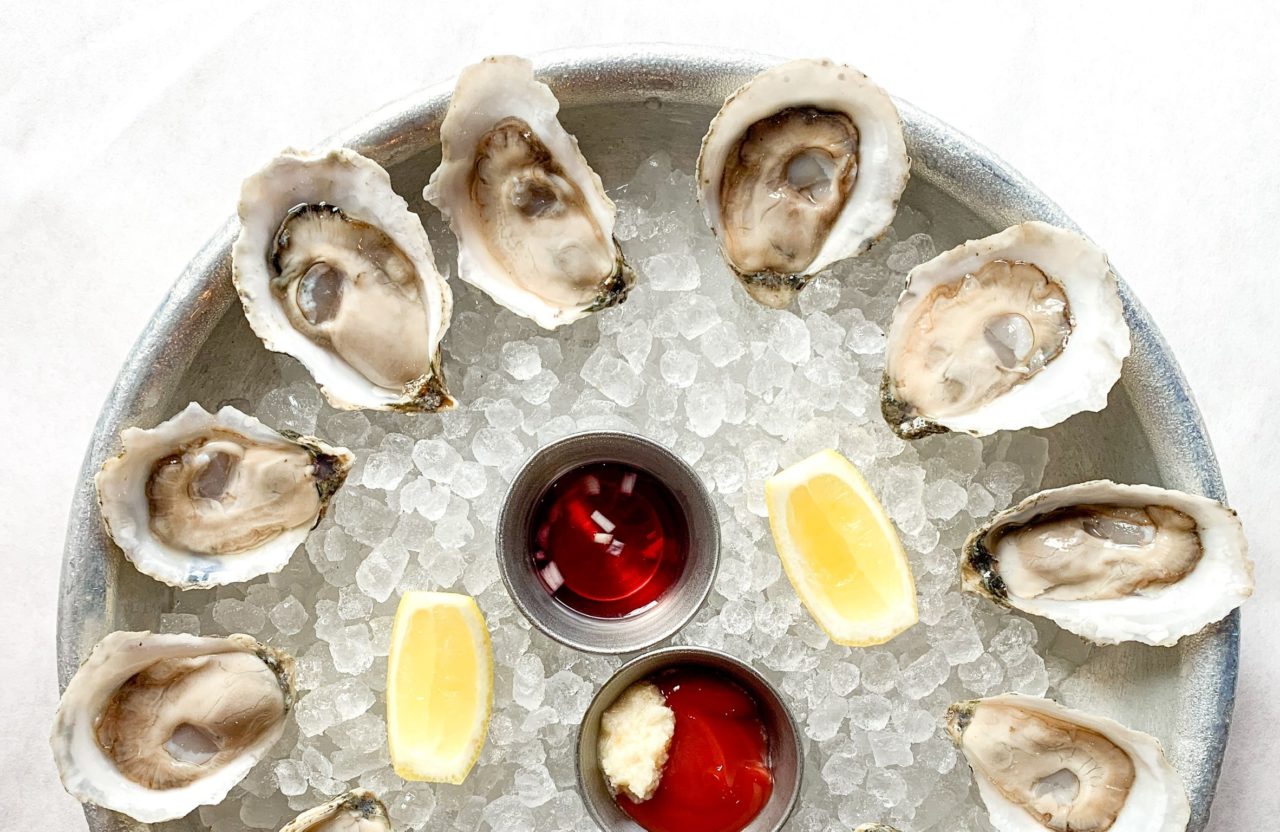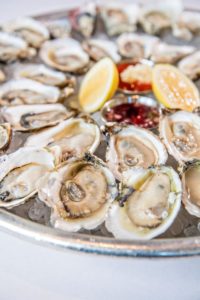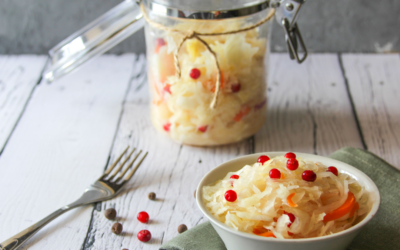Photos courtesy of Big Red F Restaurant Group

Chef Sheila Lucero
If you’ve ever heard the saying, “As tight-lipped as an oyster,” you probably get how oysters have a mysterious reputation. The flavors they hide inside their jagged shells can seem as murky as the waters they live in.
But the truth is oysters (and what they taste like) are an open book, if you understand how to read them.
Chef Sheila Lucero, Culinary Director of Big Red F Restaurant Group, a collection that includes Jax Fish House & Oyster Bar, has worked with Jax for 24 years.
Jax is known for its raw bar: its six restaurants draw oyster fans because they offer a wide range of oysters from both coasts, and servers are knowledgeable about nuances between varieties.
Oysters are wildly popular for Colorado eaters. Lucero sees oysters fly onto the tables at Jax restaurants.
“We have to move our live seafood quickly, and typically order for the day. We have busy restaurants and move through it.”
You can also find oysters at area grocers to slurp at home. Luke Burhenn, a member of the seafood team at Fort Collins’ Whole Foods Market, says that the store is often the company’s top oyster seller in the country. They source from both coasts; look for varieties like Kusshi, Kumamoto, Wellfleet, Moondancer and more. They’ll even shuck ‘em for you.
NOCO Style talked with Lucero about everything oyster. Lucero provided a few guidelines to shuck your fears.
The “r” rule: Is there rrrreally a best time of year to eat oysters?
Before refrigeration, the decree was you shouldn’t eat oysters during the summer, or the months without an “r” (May through August). The practice goes back at least 4,000 years: ancient oyster shells off Georgia’s coast show that oyster-harvesting happened from fall through spring.
It’s not because oysters spoil quicker in summer. Those months are hotter, so water temperatures are warmer, which encourages wild oysters to spawn, Lucero says.
Spawning causes hormonal and pH changes in bivalves—so called because of this mollusk species’ hinged shell. Oysters are typically plump and firm; spawning makes them thin and flabby, and they’ll taste like organ meat or raw egg yolk. Their liquor—think of it as oyster juice but there’s no alcohol in it—is usually clear and briny; it’ll be milky when spawning. They won’t make you sick, and some folks like them spawny, Lucero says, but most, understandably, prefer them plump.
Oysters in the wild are plumpest during the winter because they’ve been feasting on nutrients, giving them an ivory tinge. As nutrients wane into the spring, an oyster will become thinner, and its color will fade.
While many oysters grow naturally in the wild, others are farmed, offering opportunities to prevent spawning. Technological advances in aquaculture through crossbreeding diploids (with two sexual chromosomes for reproduction) and oysters with four chromosomes results in triploids: infertile, non-spawning oysters. Year-round farming produces non-spawning oysters to eat, with diploids producing baby oysters, aka spat.
Spat grow on farms in a series of floating rafts, buckets and cages: as oysters mature, they’re placed in larger containers. Water circulates through the containers until they’re ready for harvest.
Oysters are farmed in or near their natural ecosystems, commonly oceans or bays. So, if there’s warm water, could there be oyster farming? That was the hypothesis in the late ‘80s when a project was hatched to pull oysters from the Gulf of Mexico and grow them to maturity near the Rifle airport. The goal was two-pronged: bring quality oysters closer to Coloradans while a co-generation electric plant tapped into federal tax credits. It was innovative but flawed, and Colorado’s Rocky Mountain “oysters” today remain solely in the ranching arena.
Colorado is oyster central
Thanks to the friendly skies, Colorado draws oysters from both east and west coasts. If oysters are pulled from the water on Thursday, they should arrive (alive) in Colorado on Sunday.
How long an oyster survives depends on storage. Oysters are resilient when held properly, Lucero says. Jax rinses oysters with tap water to remove grit, sand and mud, although fresh water shortens their lifespan. At night, they’re covered with a damp cloth. If sealed in a plastic bin, they’ll suffocate; submerging in tap water will kill them.
Colorado’s aridity is one factor, but it’s also about time. Whether wild or farmed, from the point an oyster is pulled from the ocean or bay water, its abductor muscles loosen and become fatigued.
And “if an oyster is dead, you’ll know it,” Lucero says. “It’s popped open, they’ve lost their liquor and it smells funky.”
Oysters for protecting the environment
Oysters are work horses, regenerating the environment where they live. “A mature oyster can filter up to 50 gallons of water a day,” Lucero said. “If oysters are removed from an ecosystem, you’ll see that system suffer or fail. When they thrive, we thrive.”
They work like this: the abductor muscles open and close the shell. The muscles are encircled by a mantle and gills to pull in water, that flows in through the stomach and intestines, and back out. It’s how a bivalve feeds.
As filter-feeders, the micronutrients in the water where an oyster lives will determine its flavor.
When sourced from vendors who follow sustainable harvesting practices, oysters are safe and as it turns out, healthy eating. Consuming five medium oysters provides the daily allowance of vitamins A, B1 (thiamin), B2 (riboflavin), B3 (niacin), C and D. Low in cholesterol, with healthy fats and high protein content, they’re loaded with iron, copper, zinc, iodine, magnesium and calcium. At only 50 calories per half dozen, oysters are a nutritional over-achiever.
How will I know what an oyster tastes like?
The five oyster species fall into definable profiles, Lucero says. Within those species are hundreds of varieties; the environs (“merroir”) determine flavor differences. Mostly, don’t go by the name: it’s just marketing to make them memorable. But certain locations are important, like Malpeque from Prince Edward Island, Blue Points from Long Island or Chesapeake from Chesapeake Bay, Maryland.
Here’s a quick taste primer:
• Virginicas: the East Coast species. The closer to the Atlantic ocean it lives the more briny. Jax’s proprietary oyster, the Emersum, is farmed on the Rappahannock River, and has a balance of sweet, salty and creamy tastes.
• Gigas: this West Coast species was introduced to the Pacific Northwest from Japan in the early 1900s. Thanks to natural algae, expect cucumber, melon, vegetal flavors and a creamy texture.
• Olympia: this tiny species nearly became extinct from mining pollution and high consumption during California’s Gold Rush in the 1850s. Because they’re slow-growing, they’re rare and unique. A coppery, hazelnut, briny profile makes this the oyster connoisseur’s go-to.
• Kumamoto: everybody’s darling, this petite Japanese oyster with its ruffled shell has a deep cup to hold its liquor, with a sweet, creamy flavor and cucumber-honeydew finish.
• Belon (or European flat): native to Europe, its flat shell and dirty penny taste make this rare oyster unpopular for most.
Where to find raw oysters in Northern Colorado
Jax Fish House & Oyster Bar
23 N. College Ave., Fort Collins, 970.682.2275
Bistro Nautile
150 W. Oak St., Fort Collins, 970.224.1188
Smokin Fins
327 E. Foothills Pkwy #120,
Fort Collins, 970.427.8800
Lucky Fins
4530 Centerplace Dr., Ste. 324, Greeley, 970.673.8805
Whole Foods Market
2201 S. College Ave, Fort Collins, 970.267.9200 (selections from east/west coasts; $1 oysters on Fridays; call ahead for shucking)








